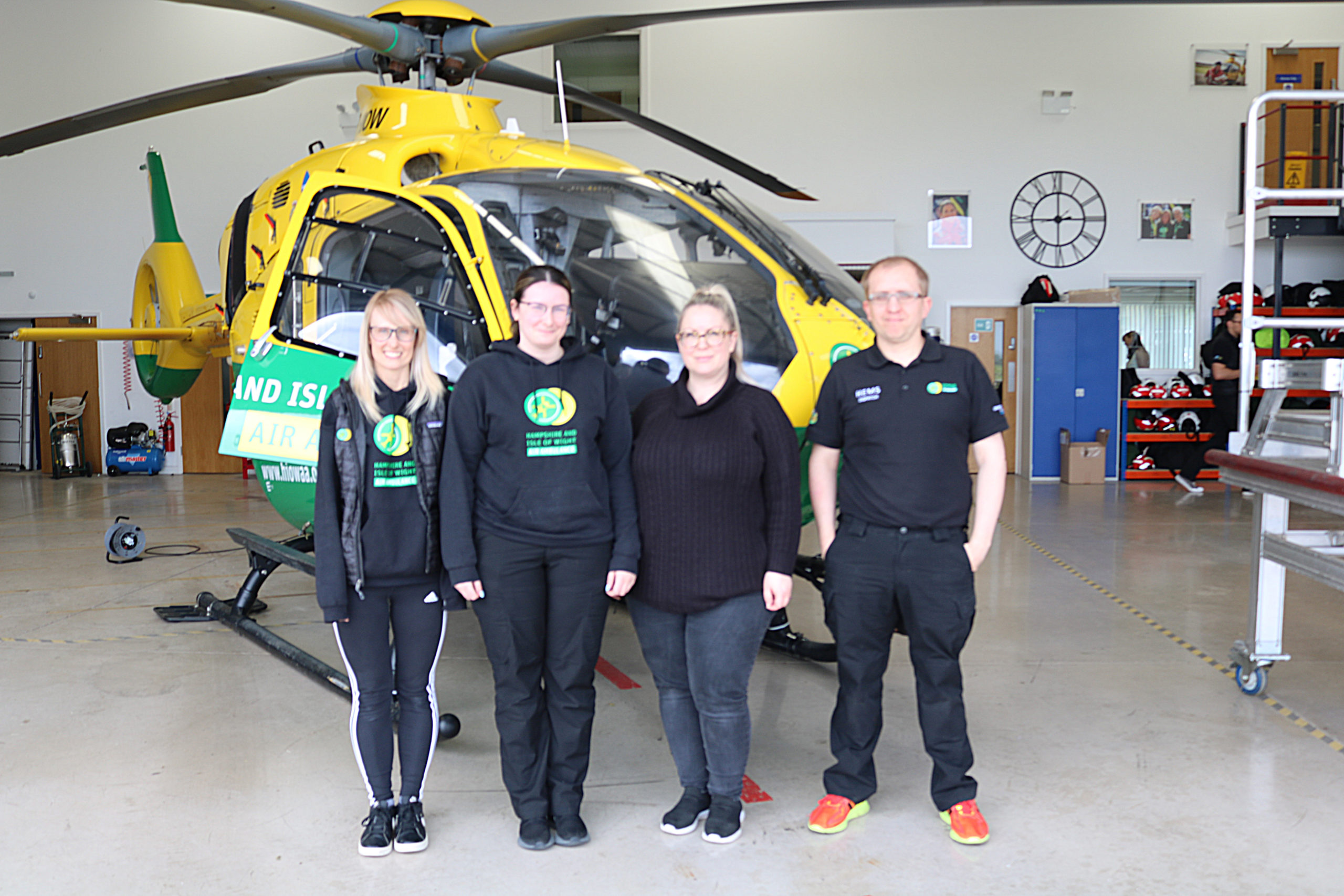It’s 7am and the duty dispatcher has logged on for the day. Next to them sits a helicopter emergency medical service (HEMS) paramedic.
Together, they are responsible for screening the thousands of calls that come into the South Central Ambulance Service 999 call centre every day, trying to determine which patients need our emergency critical care.
But what is involved in being a HEMS dispatcher? And what are the key traits that make up a successful dispatcher? Our team, Claire, Janice, Keely, Ruth and Scott, give us the low down.

Left to right: Claire, Keely, Janice and Scott.
Know how
Cardiac arrest. Major trauma. Road traffic collision – some of the keywords that grab our dispatcher’s attention. But, hidden amongst the stack of 999 calls is a seriously ill patient that needs the help of our Critical Care Team. Part of the dispatcher’s role is to seek out those not-so-obvious missions.
“We’re so specific about what kind of calls we attend,” says Keely. “We’re constantly asking, ‘What incidents can we make the biggest difference at?’.”
Incidents where patients will benefit from enhanced care. Do they need advanced medication or an emergency blood transfusion? A surgical intervention, like a thoracostomy or an amputation, or a transfer to a specialist hospital.
Every second counts – for the team and the patient. It could mean the difference for not only their survival, but their overall recovery and rehabilitation. And it is down to the team on the desk to identify these incidents and dispatch the team as early as possible.
Once a potential HEMS job is located, the next phase begins…
Multi-task extraordinaire
Our dispatchers often fly under the radar, but they form the single point of contact for our operation.
As well as searching through the crowd of calls and dispatching the duty crew, they are:
- Liaising with other air ambulances for mutual aid
- Speaking to colleagues in the ambulance service
- Warning hospitals of our imminent arrival
- Arranging for blood to be restocked
The list goes on.
“You have to focus on one thing at a time,” says Janice, “even though there’s three other things you need to be doing.”
One of those three things often involves listening in on a call to hear first-hand what is happening on scene – this is known as an interrogated call. This allows our HEMS paramedic to ask very specific questions about the injury or illness and determine whether or not the patient needs our help.
But, with one ear listening in and one eye on the stream of 999 calls that continue to pour in, “it’s all about staying calm and not allowing ourselves to get flustered easily,” says Scott.
The highs with the lows
The team on the air ambulance is dispatched – the desk duo nervously track the helicopter on the screen.
“You know the nearest ambulance is 20 minutes away. We’re en route but could take up to 15 minutes,” says Janice.
“Time goes by so slowly,” adds Claire. “It feels like they’re never going to get there.”
It’s an anxious wait. But when the team arrive at the patient’s side and begin treatment, it’s onto the next call for the dispatcher.
“We listen in on the worst stuff – and some days it’s constant,” reflects Janice.
“But when a patient makes it to hospital and there’s a positive outcome, it feels like we’ve made a real difference,” says Scott. “That’s why we come to work.”
If you think you’ve got what it takes to become a HEMS dispatcher, or want to find out more about our work, keep an eye on our vacancies page or sign up to our monthly e-newsletter to keep up to date on all things Hampshire and Isle of Wight Air Ambulance.


 Donate
Donate






